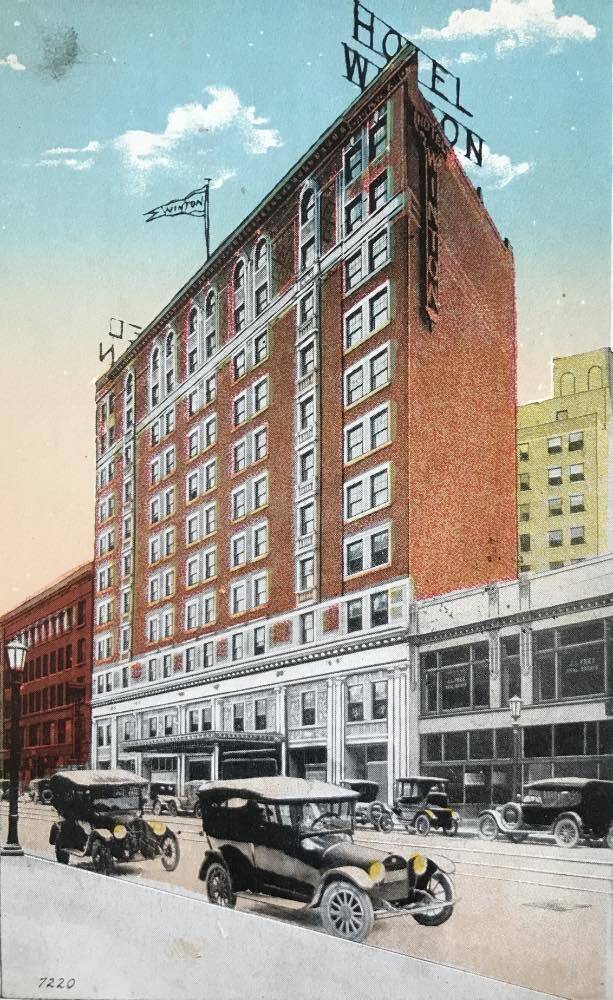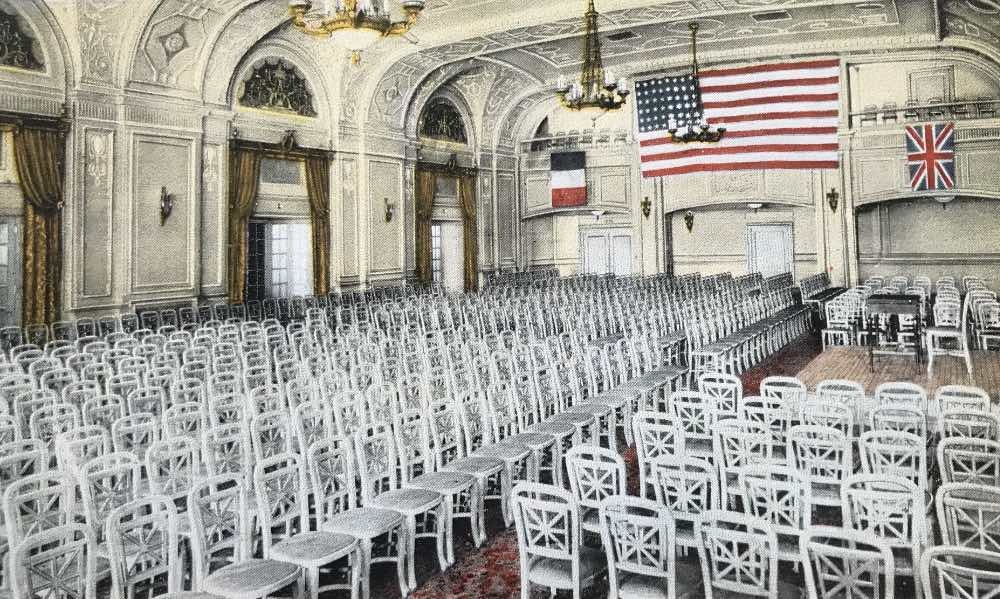
Hotel Winton was a twelve-story hotel designed by architect Max Dunning of Chicago and built at a cost of nearly $2.5 million. Named after Cleveland’s automotive pioneer, Alexander Winton, the hotel opened its doors on December 20, 1917, on Prospect Avenue just east of East 9th Street on the edge of what would become the theater district of Cleveland’s downtown. The hotel had 600 rooms with 600 private baths, available for just $1.50 a day and up. Each room featured a large bed, writing desk, dresser, grip stand, and easy chair. Additionally, each room was air-conditioned and offered a beautiful view of Cleveland’s city life. The hotel featured various amenities, including a coffee shop, grill and bar, barbershop, retail shops, and private dining rooms.
The hotel's most notable feature was the Rainbow Room. Located underground, it could host up to 900 people and attracted local, regional, and national celebrities. It featured a large section for the Rainbow Room Orchestra, which performed regularly for the hotel patrons. One of the highlights of the Rainbow Room was the large ice skating rink that was built inside. Many professional ice skaters entertained the guests. Decades later, the Rainbow Room was destroyed in order to make room for a parking garage.
In 1917, Chef Hector (Ettore) Boiardi, more commonly known as Chef Boyardee, moved to Cleveland to work as the head chef at Hotel Winton. As head chef, he specialized in Italian fare, attracting many with his spaghetti dinners. His dishes quickly became the talk of the town as many requested take home bags and recipes, so they could prepare the same meals at home. Chef Boiardi worked at the hotel until 1924, when he left to open his own restaurant on the corner of East 9th and Woodland Avenue. In 1932, Boiardi opened a second restaurant on Alpha Court off East 9th between Euclid and Prosect Avenues.
In 1931, the Great Depression hurt the hotel, leading to its sale to the Metropolitan Life Insurance Company. The company ordered a sweeping $700,000 renovation of the hotel. Renamed in honor of Lorenzo Carter, the city's first permanent white settler and first inn-keeper, who arrived in Cleveland in 1797, the new Carter Hotel opened its doors on December 16, 1932. In 1942 Met Life sold the Carter to Albert Pick Hotels of Chicago, a chain that already operated sixteen hotels nationwide.
In 1969, the Pick-Carter Hotel underwent a $1 million renovation, which lowered the room count but brought in more business. However, things took a turn for the worse when a tragic fire occurred at the hotel in 1971, which killed seven people and injured many families and firefighters. It took nearly 135 firefighters to tame this flame. Sadly, the hotel never reopened its doors. Eventually, the building was sold and redeveloped as federally-subsidized affordable housing for seniors and people with disabilities. This building is now known as Carter Manor, a 270-unit apartment complex.
Images











